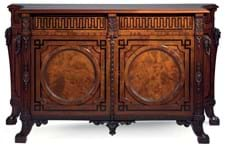Peter Tompa, head of the Global Heritage Alliance, represented the art market at a hearing on August 22.
He was among the 350-plus ‘witnesses’ from various industries arguing against a 25% tariff proposed by the Trump administration as part of a trade war with China (ATG No 2355).
‘Disproportionate harm’
The lawyer highlighted that imposing a tax on art works currently exempt from customs duties would “cause disproportionate harm to the small or medium-sized businesses of the US art trade, as well as museums and collectors”.
A tariff on Chinese art would discourage Americans from importing Chinese art from countries “including our allies in Europe and Japan”, Tompa testified.
During the hearing, a trade representative suggested that as antiques are a “luxury” purchase, the 25% tax would not dissuade buyers. Tompa replied that a key issue involved US dealers, who would face “the hardship” of having to pay the tariff up front on an object and then wait months to sell it.
'Engaged audience'
The audience of US trade officials seemed “engaged” with his testimony, Tompa told ATG, "compared with what I have experienced at cultural property advisory committees in the state department".
Witnesses can submit a post-hearing testimony, in which Tompa plans to include greater detail on the harm a 25% tariff would do to the US market for Chinese art works.
US trade officials will consider submissions from various industries and make recommendations to the government's executive branch. Tompa estimated that if the US government decided to proceed with a tariff on Chinese art, it would take "a couple of weeks" to be put into effect.
However Tompa said that overall, he was “cautiously confident – but underline ‘cautiously’” about a positive outcome, given that US and Chinese officials had restarted trade negotiations.














